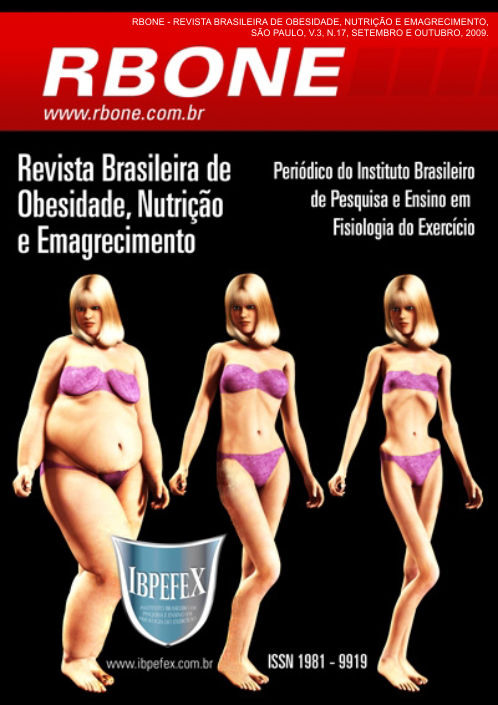Anthropometric profile of students in a kindergarten school of the southern region in the municipality of São José -SC
Abstract
A transversal descriptive research was carried out with 128 students with ages from 8 to 11 in a school of São José Municipal network –SC. The study was delimited in the variables related to the anthropometric profile, specifically in the weight, height and BMI. According to the results presented the female samples presented an average weight of 28.29, of 32.67,of 36.64 and of 46.98 kg for ages 8, 9, 10 and 11 respectively. For the male ones, the average weight was 29.57, 32.23, 36.38 and 41.86 kg for ages 8, 9, 10 and 11 respectively, and it was observed a significant difference between the sexes and ages of 8 and 11 only. For the height, the results of the female sex were 1.32, 1.37, 1.43, and 1.52 m for 8, 9, 10 and 11 respectively. For the male ones, the average height was 1.34, 1.38, 1.42 and 1.47 m for 8, 9 10 and 11 respectively. It was seen a significant difference between the ages 10 and 8 and between the ages 11 and 8 and 9. It didn’t present any difference in 10 and 9 and 11 and 10. For the BMI variable, the female results were 8 years old of 16.26, of 17.35, of 17.84 and of 20.21kg/m² for 8, 9, 10 and 11 years old respectively. For male, the average BMI was 16.43, 16.92, 17.99 and 19.35 kg/m² for 8, 9, 10 and 11 respectively. When compared between the sexes and ages in the weight and height variables, this study concluded that there is significant difference and that the profile of the people that participated in the research has to do with the normality patterns.
References
-Anjos, L.A.; Veiga, G.V.; Castro, I.R.R. Distribuição dos valores do índice de massa corporal da população brasileira até 25 anos. Rev Panam Salud Publica, Washington. Vol. 3. Num. 3. 1998. p.164-173.
-Cole, M. Culture in development. Em M. Woodhead, D. Faukner & K. Littleton (Orgs.), Cultural words of early childhood. London & New York: Routledge.1998. p. 11-33.
-Filho, L.A.D. Manual do Personal Trainer Brasileiro. 3ª Ed. São Paulo: Ícone, 2006.
-Fagundes T, Krebs RJ. Perfil do crescimento somático de escolares de Santa Catarina. Revista Digital: Lecturas en Educación Física, Buenos Aires. Ano. 10. Num. 83. 2005.
-Fisberg, M.; Oliveira, C.L. Obesidade na Infância e Adolescência –Uma verdadeira Epidemia. Arq Bras Endocrinol Metab. Vol. 47.Num. 2. Abril 2003. p. 107-108.
-Heyward, V.H.; Stolarczyk, L.M. Avaliação da Composição Corporal Aplicada. Manole, 2000.
-Maestri, M.; Fiamoncini, R.L. Perfil antropométrico de crianças na idade de 8 à 10 anos. Revista Digital Buenos Aires. Ano. 11. Num. 97. 2006.
-Monteiro, C.A.; Conde, W.L. Tendência secular da desnutrição e da obesidade na infância na cidade de São Paulo (1974-1996)*Rev Saúde Pública. Vol. 34. Num. (6 Supl). 2000. p. 52-61.
-Marins, J.C.B.; Giannichi, R.S. Avaliação e prescrição da atividade física. Rio de Janeiro: Shape; 1996.
-Morais, Y.C.; Brandão, Z.A.; Raso, V.; Nível nutricional e de atividade física em estudantes da rede pública e particular de ensino. Revista Brasileira de Obesidade, Nutrição e Emagrecimento. São Paulo. Vol. 1. Num. 2. 2007. p. 78-83.
-NCHS. Anthropometric Reference Data and Prevalence of Overweight US 1976-80. Vital and Health Statistics, Series II, No. 238, DHHS Pub No (PHS) Num. 87. 1987. p. 1168.
-Oliveira, C.L.; Mello, M.T.; Cintra, I.P.; Fisberg, M. Obesidade e Síndrome Metabólica na Infância e Adolescência. Revista de Nutrição. Campinas. Vol. 17. Num. 2. 2004. p. 237-245.
-Parzianello, R.P.; Santos, M.A.M.. Correlação entre o índice de massa corporal e o nível de atividade física habitual em crianças de 7 a 10 anos. Revista Brasileira de Prescrição e Fisiologia do Exercício, São Paulo. Vol. 1. Num. 1. 2007. p. 45-54.
-Perri, M.G.; Nezu, A.M.; Viegener, B.J. Obesity: definition, prevalence and consequences.In: Improving the long-term management of obesity: theory, research, and clinical guidelines. John Wiley & Sons, 1992; 3-24. Series 854.
-Thomas, J.R.; Nelson J.K. Métodos de pesquisa em atividade física. 3ª Ed. Porto Alegre: Artmed, 2002.
-Velásquez, G.; Martins, I.S.; Cervato, A.M.; Fornés, N.S.; Marucci, M.F.N.; Coelho, L.T. Relationships betweenstature, overweight and central obesity in the adultpopulation in São Paulo, Brazil. Int J Obesity. Vol. 23. Num. 1. 1999. p. 639-644.
-World Health Organization. Physical status: the use and interpretation of anthropometry. Geneva. 1995. Technical Report
Authors who publish in this journal agree to the following terms:
- Authors retain the copyright and grant the journal the right of first publication, with work simultaneously licensed under the Creative Commons Attribution License BY-NC which allows the sharing of the work with acknowledgment of the authorship of the work and initial publication in this journal.
- Authors are authorized to enter into additional contracts separately for non-exclusive distribution of the version of the work published in this journal (eg, publishing in institutional repository or book chapter), with acknowledgment of authorship and initial publication in this journal.
- Authors are allowed and encouraged to post and distribute their work online (eg, in institutional repositories or on their personal page) at any point before or during the editorial process, as this can bring about productive change as well as increase impact and impact. citation of published work (See The Effect of Free Access).






